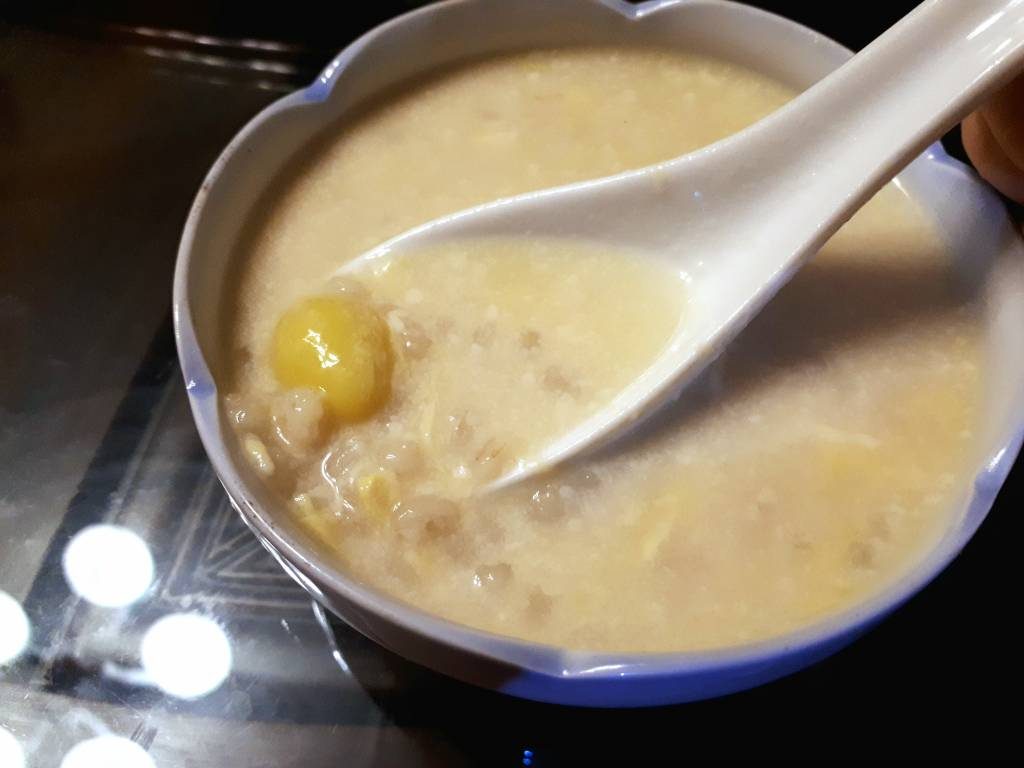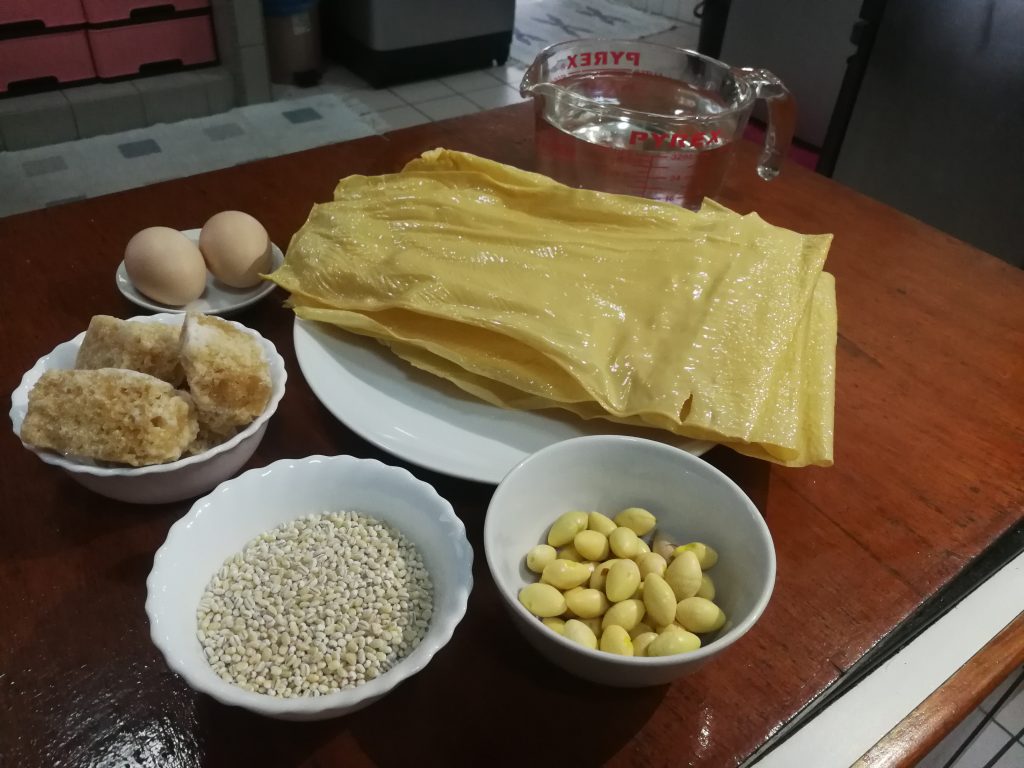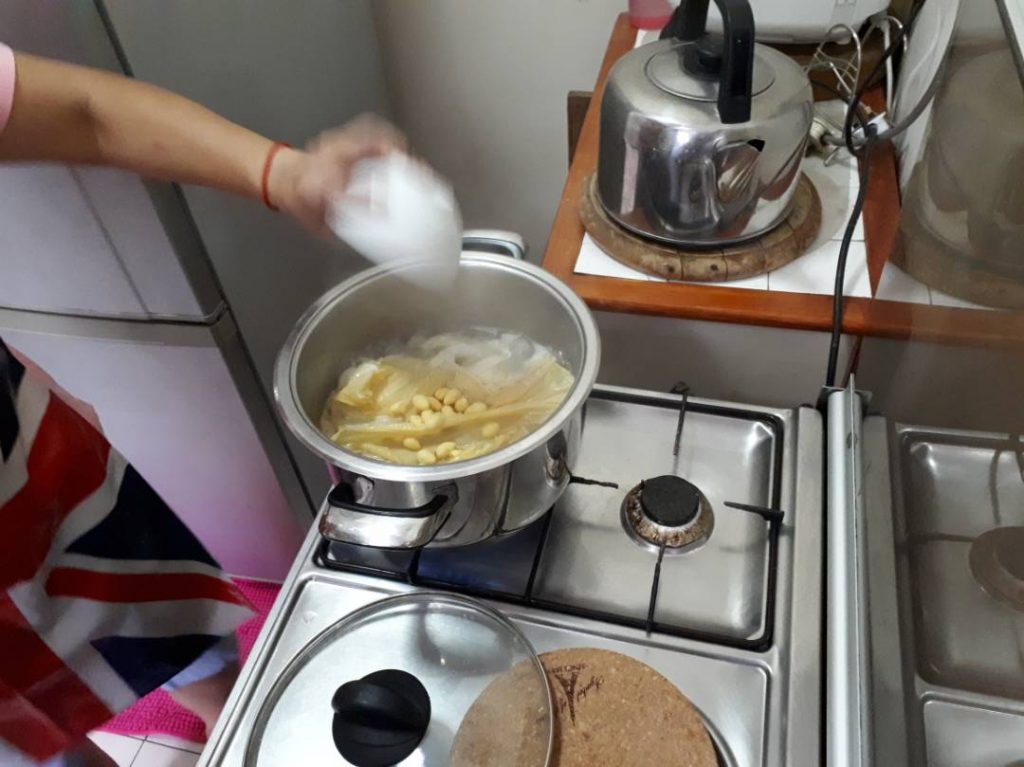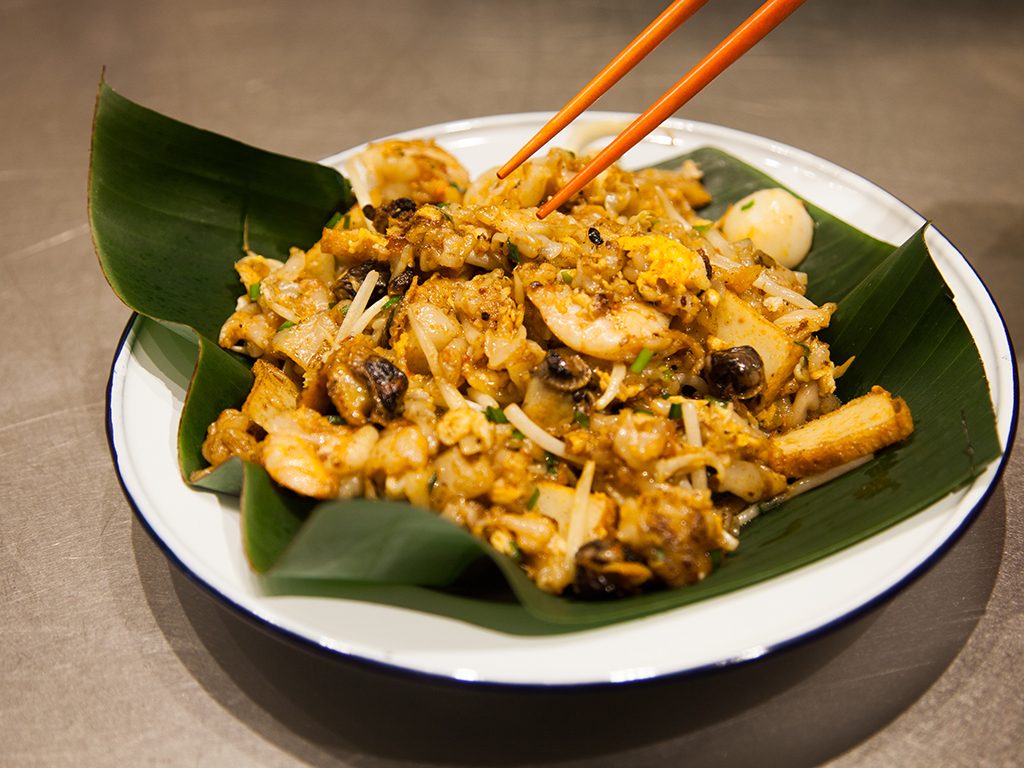
You may have seen this silky smooth Chinese dessert in restaurants, but did you know this may be the luckiest dessert you need this Chinese New Year? Certain dishes are eaten during the Lunar New Year because of their symbolic meaning, where certain words, pronunciation or appearance represents wealth, joy or luck.
I call this my lucky dessert because it signifies having wealth, especially if you consume it during Chinese New Year! If you want to encourage positivity and hope for your bank account, this delicious Chinese dessert will definitely taste better and give you more happiness than tossing a coin in a wishing well.
This classic Chinese dessert is known as Fu Chuk Yi Mai Pak Koh Tong Sui (腐竹薏米白果糖水) in the Cantonese dialect which translates to Barley, Bean Curd and Gingko Nut Dessert Soup. The word “Fu” means “having prosperity or being prosperous” so imagine starting your new year having a bowl of wealth, sweet right?
Fu Chuk Yi Mai Pak Koh Tong Sui is excellent when paired with a rich Chinese Reunion Dinner or just as a tea-time snack with Cucur Udang and side of chilli dipping sauce. Plus, it’s pretty easy to make, just watch the video and follow my written recipe below:
Ingredients

Dried items
- 100g gingko nuts, cracked and deshelled
- 100g of barley (roughly 1 packet)
- 3 pieces of fu chuk (bean curd sheets – the softer kind)
- 5 blocks of honeycomb sugar
Fresh ingredients
- 2 eggs
- 8 – 12 cups of water
Instructions
Preparation
- Rinse the barley by running it through purified tap water to clean it.
- Gently pat the pieces of fu chuk with cloth that’s only slightly damp to remove all traces of dust that it may have from your local morning market stall.
- Crack and deshell all the gingko nuts and put them in a bowl.
- Crack the eggs into a bowl, beat it and set aside.
Making the dessert
- Add 8 – 12 cups of water into your pot.
- Pour in clean barley.
- Put the pot on the stove and let it boil for 15 – 30 minutes, depending on the type of barley you bought because some types of barley need to be boiled longer to soften.
- Add fu chuk and de-shelled gingko nuts into the pot once the barley water is boiling.

Add fu chuk and gingko nuts into the boiling barley water. - When the fu chuk has broken up and the gingko nuts are soft, add in 5 blocks of honeycomb sugar into the pot. You can add more if you like it sweet.
- The next bit is tricky and is an ancient Chinese cooking technique: we are going to create a “flower egg”. The reason why it is given that name is because it’s poured in a thin stream as you stir the pot of boiling sweet dessert soup continuously. This creates a fine spiral-like flower shape with lovely fine strands weaving in and all around this dessert. Switch off the stove immediately after pouring in the egg because you don’t want the “flower egg” to have strands that are overcooked and too thick. Over boiling may also break up the strands and it won’t look so pretty.
- For extra wow factor, serve while it is still warm in nice chinese porcelain bowl and ceramic spoon. Enjoy.
Ingredient tip
- Get the fu chuk (bean curd sheet) from your local morning market. There are two types being sold: 1. the hard type that is more suited for frying and 2. the soft type that is normally used for desserts. Ask for the soft type and be sure to clean it with a slightly damp cloth to wipe off any dust. The cloth must not be too damp, otherwise the soft fu chuk will disintegrate.
- Deshelling the gingko nut: Gently crack the gingko shell and peel. Then peel off the the brown skin. Rinse before use.
Will you be making this Chinese dessert at home or for that extra special occasion? Don’t forget to tag your pictures with #butterkicap and share your experience making this lucky dessert!



